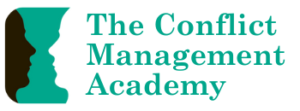Those of you who know me well will no doubt be aware of my delight in some good myth busting! This book is full of myth-busting goodness, including myths about intelligence, brain architecture and structure, teaching and learning, human development, learning environments, mind-body balance, brain plasticity, memory, attention, and language.
A neuromyth is an entertaining story that tries to explain complex phenomena of brain functioning. They are sometimes based on fiction, misunderstandings, misbeliefs, misconceptions, or misinterpretations about how the brain learns. In science, there are actually no truths, but rather evidence or lack of evidence, which fluctuate based on improvements in technology and better and more research studies. The sheer amount of information available has caused the proliferation of additional neuromyths. Myths exist because humans want things to be easy (complexity is rejected; reductionism; oversimplification of findings).
The myths discussed in this book were collated with the guidance of a panel of international experts, who provided studies and peer-reviewed articles to support their viewpoints as they argued for inclusion or exclusion of ideas. The book identified six principles that are true in neuroscience, and 21 tenets that are true but have a high degree of variation.
Six principles that are “true” for all brains, independent of age, subject matter or culture:
- Human brains are as unique as human faces.
- Each individual’s brain is differently prepared to learn different tasks.
- New learning is influenced by prior experiences.
- The brain changes constantly with experience.
- The brain is plastic.
- There is no new learning without some form of memory and some form of attention.
21 ‘tenets” that are true but have a high degree of human variation:
- Motivation influences learning.
- Emotions and cognition are mutually influential.
- Stress influences learning.
- Anxiety influences learning.
- Depression influences learning.
- Learning is influenced by both challenge and threat as perceived by the learner.
- Reactions to facial expressions are both universally and highly individualised.
- The brain interprets tones of voices unconsciously and almost immediately.
- Humans are social beings who learn from and with each other.
- Attention is a complex phenomenon comprised of multiple systems.
- Most learning does not occur linearly.
- Learning involves conscious and unconscious processes.
- Learning is developmental as well as experiential.
- Learning engages the entire physiology.
- Sleep and dreaming influence learning in different ways.
- Nutrition influences learning.
- Physical activity influences learning.
- Use it or lose it.
- Feedback about learning progress influences learning outcomes.
- It is easier to retrieve memories when facts and skills have been embedded in individually relevant and meaningful contexts.
- Brains detect novelty and patterns.
Myths that I have heard taught that are debunked in this book:
- We do not only use 10% of our brain.
- There is not a clear distinction between functions of right and left sides of brain. (One hemisphere might naturally be more dominant for one skill set or another, but if needed the other hemisphere may be able to take over that function). Creativity is not in the right hemisphere of the brain, nor is logical thinking on the left.
- People are not “left-brained” or “right-brained”. Both hemispheres are used together in most functions.
- We cannot separate reasoning and decision making from emotions and feeling.
- People do not have ‘learning styles’ and do not learn better when taught in their preferred style.
- The brain cannot multitask.
This is a fascinating book, and essential reading for anyone who relies on neuroscience concepts in their work or training. Make sure that you are not basing your work on any myths!

